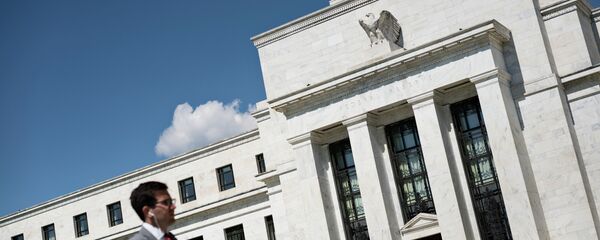Kristian Rouz – The US economy might have accelerated to roughly 3pc year-on-year in 3Q16 on gains in home sales and international trade, even though the majority of sectors have been severely underperforming for five consecutive quarters.
While the housing sector and international trade gain support from the Federal Reserve’s ultra-low interest rates, the five straight quarters of carnage in corporate profits, and weak manufacturing might offset the gains, rendering the debt-fuelled growth model increasingly unsustainable.
"A lot of the pieces of the puzzle have come back together in a positive direction, with a pickup in the export of goods to the rest of the world and new home sales," Chris Rupkey of New York-based MUFG Union Bank said.
According to the Commerce Department data, new home sales gained 3.1pc, with a seasonally adjusted overall volume of 593,000 units in September, coinciding with significant gains in housing prices and ultra-affordable mortgage rates, fluctuating around 3.5pc on a 30-year contract. In the previous quarter, however, the amount of home sales was revised by 85,000 lower than estimated previously. Home sales gained 29.5pc from a year ago as the buyers have rushed in banks for the still-cheap credit before the Fed continues lifting base borrowing costs.
Wholesale inventories, meanwhile, advanced to $590.7 bln in September, 0.2pc higher than a month earlier, potentially suggesting, however, a weaker consumer demand for goods.
US growth has not surpassed the 2pc annualized threshold since 3Q15, having arrived at below 1pc twice.
"We continue to expect strong household consumption, and the recent improvement in auto imports supports that view, but weak consumer goods imports is a downside risk to the outlook, as the US sources the majority of its consumer goods overseas. On investment, the sharp decline in capital goods in September (-3.6% m/m) as well as the consistently negative y/y readings over the past year… indicate tepid demand for machinery and other business equipment," analysts of the British bank Barclays wrote in a note.
Meanwhile, the International Monetary Fund (IMF) has revised its outlook on the US economic growth for 2016 from an estimated 2.2pc in July to 1.6pc in October, according to the Fund’s latest World Economic Outlook. The Federal Reserve estimates yearly growth for all of 2016 at 1.8, and 2.0pc for 2017.
US consumption, the key driver of the economy, "has remained strong, supported by a firm labor market and expanding payrolls," the IMF said, "but continued weakness in non-residential investment together with a sizable drawdown of inventories has weighed on the headline growth number."
Weaker domestic investment, the IMF said, "reflects in part still-negative energy investment, dollar appreciation, financial turbulence earlier in the year, and heightened policy uncertainty related to the electoral cycle.”
Whilst the economy has been slowing throughout the first two quarters of the year, housing and trade data only are utterly insufficient to produce sustainable long-term growth as the troubled manufacturing and corporate sector are struggling. The abundance of credit liquidity, however, might help postpone the looming recession, but as the Fed board is becoming increasingly hawking on policy, the influx of cheap credit is poised to dry out soon.




